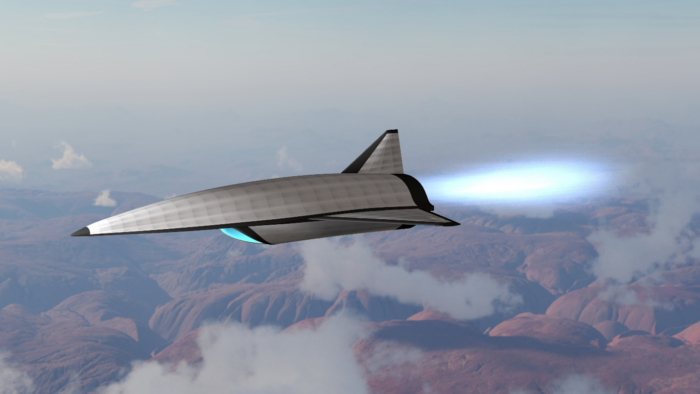As the demand for higher data capacity and secure communication in space continues to grow, traditional methods like radio frequency (RF) communications are encountering limits that optical communications aim to overcome. Unlike RF, which has been the backbone of satellite communications for decades, optical systems use laser beams to transmit data, promising higher data rates, enhanced security, and more efficient use of resources. The space industry’s increasing reliance on data-intensive applications, from Earth observation to satellite constellations, has fueled interest in optical communications.
Jeff Huggins, President of Cailabs US Inc., has been at the helm of introducing these technologies to the U.S. market. “Optical communications offer significant advantages, but they’re still a newer concept for many in the satellite industry,” he explained. We recently had the opportunity to sit down with Huggins to discuss the unique characteristics of optical systems, how they complement RF, and the work Cailabs is doing to address challenges and enable broader adoption.
The Basics of Optical Communications
Optical communications involve transmitting data through laser beams, either between satellites or from satellites to ground stations, without relying on fiber-optic cables. Huggins described how this technology originated in telecommunications. “We’ve been pushing light through fiber-optic cables for years. Free-space optical communications extend this concept into space, sending signals through open air rather than cables,” he said.
Unlike RF, which uses radio waves to transmit data, optical communications rely on much shorter wavelengths of light. This key difference gives optical systems unique characteristics. “An RF beam might spread across 40 to 50 kilometers when it reaches the ground,” Huggins explained. “In contrast, an optical beam is only about 12 meters in diameter, making it far more focused.”
While optical communication systems have roots in terrestrial telecommunications, their adaptation for space introduces new challenges such as atmospheric interference and precise beam alignment over vast distances. Despite these hurdles, the potential benefits of optical systems continue to drive innovation and adoption in the field.
Advantages Over RF
The precision of optical beams provides several advantages, especially in applications where RF systems face limitations. First, optical communications offer significantly higher data rates. “The physics of RF limits its bandwidth,” Huggins said. “With optical systems, we’re commercially achieving 10 gigabits per second today, and laboratory demonstrations have reached as high as 100 gigabits.”
Security is another benefit. RF signals, with their wide beams, are more susceptible to interception and jamming. “With optical, you have to be in the beam itself to receive the signal,” Huggins noted. “Even if someone tries to intercept it, they would break the beam, making unauthorized access immediately detectable.”
Additionally, optical communications reduce reliance on spectrum allocation, a process where governments auction off specific RF bands for use. “Spectrum is becoming increasingly congested,” Huggins said. “Optical doesn’t require spectrum allocation, which simplifies deployment and avoids the costs associated with acquiring licenses.”
Energy efficiency is also a factor. “The power requirements for optical systems are lower, meaning less weight and power consumption for satellites,” Huggins added. This makes optical systems particularly attractive for missions where weight and energy are critical considerations.
Overcoming Challenges: Atmospheric Interference
Optical communications also faces notable challenges, particularly when transmitting signals through Earth’s atmosphere. “The atmosphere introduces distortions through phenomena like scintillation, where air movement disrupts the signal, and obstacles like clouds,” Huggins explained.
Cailabs addresses these issues with its Multi-Plane Light Conversion (MPLC) technology. “Our system breaks the incoming light into smaller components and reassembles it to correct phase and polarity distortions,” Huggins said. Unlike adaptive optics, which rely on mechanically adjusting lenses, MPLC is a passive system. “This makes it more reliable and commercially viable,” he added.
Cailabs has already delivered MPLC-based systems to clients worldwide, including the French Ministry of Defense and Swedish Space Corporation. “We’ve demonstrated the system’s ability to handle real-world conditions,” Huggins said. “It’s robust enough to work reliably during satellite passes, which typically last only seven minutes from horizon to horizon.”
Complementary Roles for RF and Optical Systems
Huggins emphasized that optical systems are not meant to replace RF entirely. Instead, they serve as a complementary technology. “There are missions where RF remains indispensable, particularly in bad weather conditions where optical systems can’t penetrate clouds,” he said. “However, optical provides an additional layer of resilience. If RF is jammed, optical can offer a secure fallback.”
This dual-role approach is being adopted by satellite service providers seeking to manage increasing data flows. “Many operators are looking to integrate optical ground stations to offload data from existing RF systems,” Huggins noted.
Looking Ahead
As the space industry moves toward higher data demands, optical communications are expected to play a larger role. Huggins noted that the transition would require continued education and collaboration. “The industry is still getting accustomed to the idea of optical systems,” he said. “Our job is to demonstrate not only how they work but why they’re a viable option for specific use cases.”
With advancements like MPLC addressing long-standing challenges, optical communications are becoming a practical solution for both commercial and defense applications. By focusing on its strengths—higher data rates, enhanced security, and efficient use of resources—optical technology is an ideal complement to RF systems in the growing satellite communications ecosystem. As Huggins put it, “Optical systems aren’t here to replace RF—they’re here to work alongside it, offering a reliable, secure, and scalable option for the increasing demands of space-based connectivity.”
Share this article:











